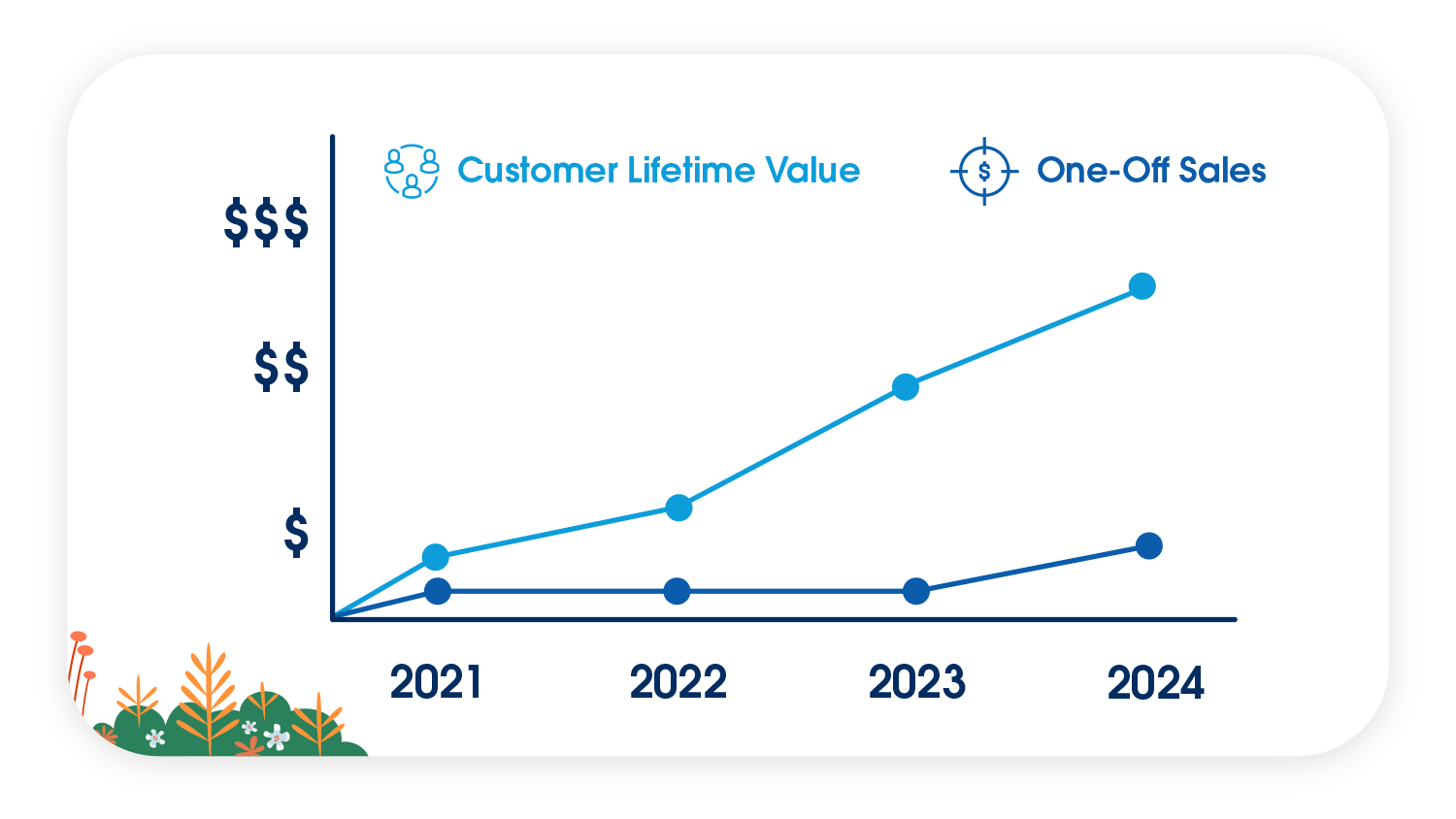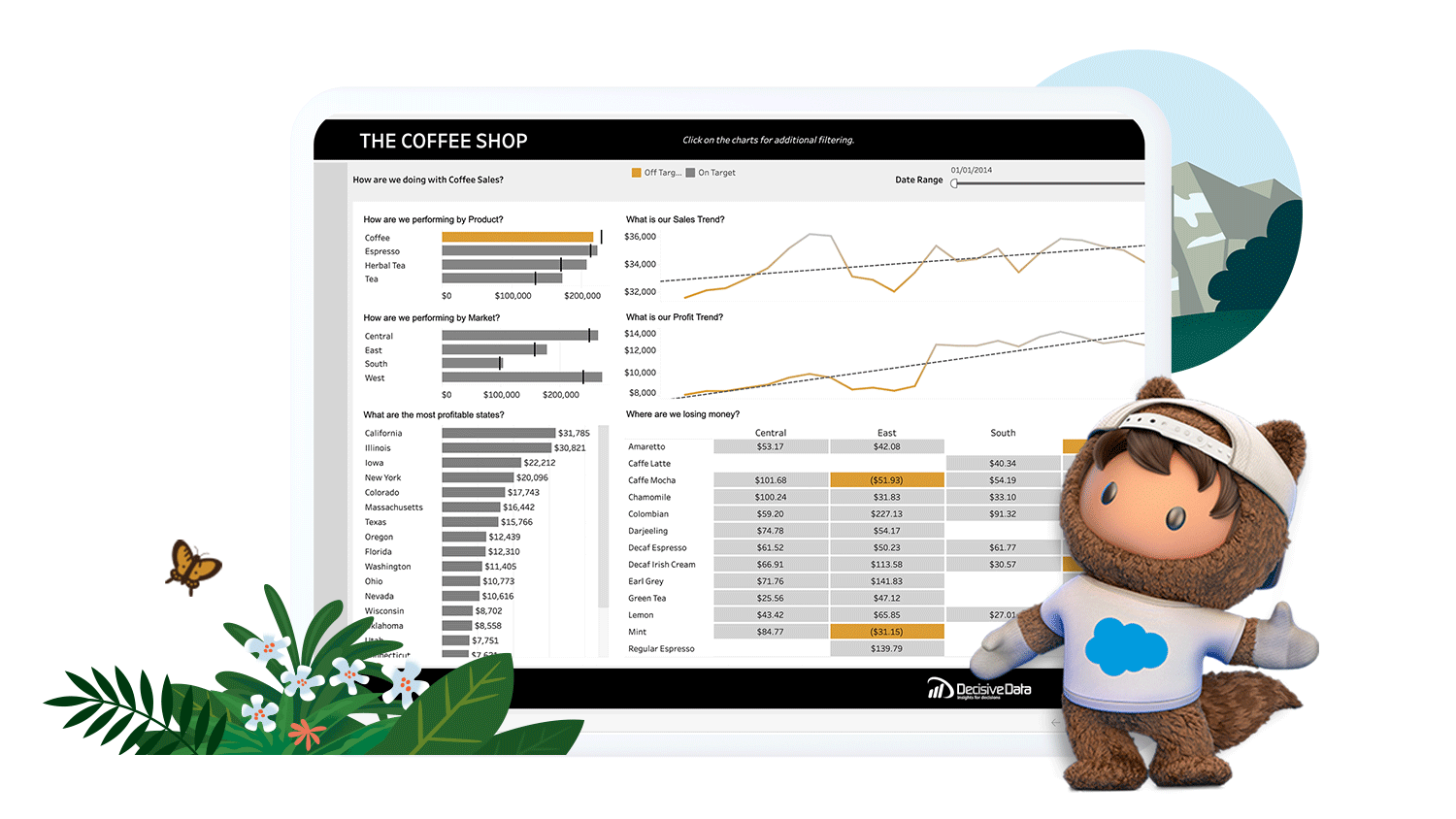The pandemic didn’t just disrupt sales. It caused a seismic shift.
Before 2020, sales teams hummed on leads in pipe, one-off sales (digital and in-person), and pipeline velocity. Success metrics, like quotas, reflected these topline goals.
But in the wake of COVID-19, digital adoption soared, pushing widespread remote buying and selling. At the same time, economic strains demanded new revenue streams. So, companies pivoted — hard.
To ensure predictable growth that offered customers digital-first, low-cost entry to products and services, businesses rolled out subscriptions. They also turned their focus to long-term customer success instead of one-off sales, reinvesting in employee retention to ensure there was no gap in customer relationships.
“It was the beginning of a paradigm shift,” said Belal Batrawy, founder of sales company Death to Fluff. “We started moving away from tracking net-new activity and thinking about a longer revenue cycle.” In short, businesses shifted focus to long-term relationships — both with customers and employees.
And to track how successful they are at building these relationships? Well, that requires new sales metrics.
Track analytics in real-time so you can take action quickly
Sales Analytics, paired with Sales Cloud, delivers in-the-moment insights that help you take deal-winning actions. See how it works.



What are sales metrics?
Sales metrics are numerical measures of sales performance. They can cover anything to do with sales and the sales process — from the number of sales-related activities a rep completes in a given quarter to the win rate (percentage of deals closed) during a year. These metrics are used to help sales teams gauge success against pre-determined goals.
New sales metrics take the spotlight
While topline figures are still important for mapping short-term forecasts, those that measure longer-term value are increasingly top of mind for sales leaders. The most important ones are recurring revenue, customer lifetime value, customer retention, early warning signs, and employee retention.
Here’s the “what” and the “why” of these sales metrics in detail:
1. Recurring revenue
What is it? The most common type of recurring revenue is a subscription. Using this model, companies charge customers for access to features of a product or levels of service for a set period of time, typically monthly or yearly.
Other recurring revenue models include leases, affiliate sales, and ad-based revenue.
How is it measured? Different measures track different models, but all depend on a simple formula:
[Recurring revenue = Active accounts in a period X Cost of good/service]
Annual recurring revenue (ARR) and monthly recurring revenue (MRR) are perhaps the most common measures, but others like annual order value (AOV) and annual contract value (ACV) are also used.
Why does it matter? First, recurring revenue is easily managed digitally, which aligns with the shift to widespread digital adoption of both buyers and sellers. Second, it attracts buyers with lower-cost, incremental spend. Lastly, it generates predictable revenue for sellers — and makes accurate forecasting easier.
Even better, recurring revenue refocuses on customer success over the long term. “Companies are looking at how their services can ultimately create better long-term outcomes for customers,” explained Salesforce Senior Director of Growth Strategy Heather Unruh. “That means a shift from one-off sales to subscriptions and complementary products that deliver an upgraded experience.”
RELATED BLOG POST: How To Move To a Subscription Business Model

2. Customer lifetime value
What is it? Instead of prioritizing one-off transactional sales, customer lifetime value accounts for all likely customer purchases from a single company based on past purchase behavior.
How is it measured? The basic equation is:
[Customer lifetime value = Average order amount X Average purchases/year X Average retention time in years]
This can change based on shifts in product offerings, like one-off sales to subscription products. Ultimately, however, you should account for all likely revenue from each customer over the course of their relationship with your company.
For example, instead of focusing only on revenue per available room, a hotel chain would likely look at the buying behavior of customers in their loyalty program. They could calculate lifetime value based on reservations and purchase patterns on property, like drinks at the hotel bar or trips to the spa.
Why does it matter? For sellers, the appeal of maximizing customer lifetime value is business resilience, fueled by steady revenue. While prospecting and one-off sales will never go away, a bottom line dependent on the consistent purchase behavior of loyal customers means predictable revenue and more accurate forecasting.
3. Customer retention/churn
What is it? Customer retention is the percentage of customers that remain active buyers. Customer churn is the opposite — the rate at which customers stop doing business with you. Both can be used to track the length of a customer’s relationship with a company.
How is it measured? There’s one set of calculations that provides both retention and churn rates. These are typically run monthly or quarterly, but can be run yearly as well. Here are the basic equations:
[Customer churn = (Customer total at end of churn period – Customer total at start of churn period) / Customer total at the start of the churn period X 100)]
[Customer retention = 100 – Customer churn]
Let’s say you have 100 customers at the start of the first quarter and only 90 customers at the end. Here’s how you would calculate churn and retention:
100-90 = 10
10/100 = .1
.1 X 100 = 10% customer churn rate
100-10 = 90% customer retention rate
The ultimate goal for any business is negative churn or positive growth in your customer base.
Why does it matter? Given the fresh emphasis on customer lifetime value, customer retention is key. This replaces transactional customer satisfaction with a renewed focus on long-term relationship-building. As noted above, lifetime value allows for predictable growth and business resilience.

4. Early warning signs
What is it? This measure identifies changes in customer purchase patterns that may indicate waning interest in your products or services — a danger to predictable revenue.
How is it measured? The triggers used for tracking early warning signs depend heavily on your product(s) and normal customer habits, but usually reflect product purchase and use changes. The goal is to identify “red flag” behaviors that, if repeated over the course of a set period of time, will negatively impact revenue.
Back to the hotel example. Let’s say loyal customers stay, on average, three nights and enjoy two drinks at the bar during their stay. If this pattern starts to shift for a loyal customer — the length of stay dips to a day or two, for instance, or bar drinks disappear from room tabs — the hotel can flag these as early warning signs, reach out to pinpoint the reason for the change, and offer discounts, deals, and incentives to encourage renewed loyalty.
Why does it matter? To maximize customer lifetime value, businesses must be keenly focused on customer success. While measures like customer satisfaction can trigger reactive efforts to repair damaged relationships, early warning signs are proactive, allowing businesses to meet the needs of customers before mounting frustration leads to churn.
RELATED BLOG POST: 7 Sales Dashboard Examples Every Leader Needs
5. Employee retention/churn
What is it? Much like customer retention, employee retention is paired with churn to gauge staff tenure. Some companies combine this with employee lifetime value, though that’s much harder to gauge as employees can unpredictably change roles or job functions.
How is it measured? This is calculated the same way as customer retention and churn, only with employees and typically over the course of a quarter or year. Here, again, are the equations:
[Employee churn = (Employee total at end of churn period — Employee total at start of churn period) / Employee total at the start of the churn period X 100)]
[Employee retention = 100 – Employee churn]
Why does it matter? Top talent is hard to find. With virtual teams struggling to stay engaged without in-person collaboration, it’s also hard to keep talent on board.
Unruh puts it this way: “It’s really easy [for reps] to pick up and take their skills elsewhere. When they do, companies are left with a customer-rep relationship gap, a loss of institutional knowledge, and the cost of training new talent.”
In this environment, keeping an eye on employee retention — and spending more energy on ensuring employee satisfaction — is key.
What’s next?
In this new digital normal, customers reign. “The future of selling is not just about hitting numbers,” Unruh said. “It’s about customer success.” To make that success possible while ensuring predictable growth, top talent must be secured and recurring revenue models employed. Equally as important, the right metrics need to be tracked to gauge success.
New tools and skills will help you get there. “We need to start thinking about how to combine all customer engagement data and create [CRM] dashboards that show the full picture of success,” Batrawy said.
The next step for companies should be hiring a RevOps person who’s data science-driven, he argues — someone to find the right tools, to build the right dashboards, to showcase the sales metrics that matter. Only when this data is clear can sales leaders craft strategies that lead to growth.
Track all of your metrics in one place
Build easy-to-understand dashboards and leverage AI insights using Revenue Intelligence for a full picture of behavior and growth across the entire customer lifecycle.





























